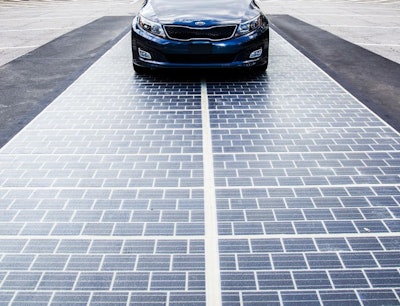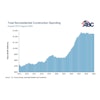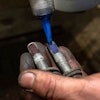
According to the Federal Highway Administration (FHWA), there are currently 4.12 million miles of roads in the United States. Based on that data, roads take up less than 1% of the total land area of the U.S. and yet they still get a bad reputation for just sitting there. Well not anymore.
An 18-mile stretch of Interstate 85 in southwestern Georgia, renamed the Ray C. Anderson Memorial Highway, or “The Ray,” is being built as living laboratory helping advance the ideas that a highway can do even more provide us with a means for transportation.
“We’re at a tipping point in transportation,” says Allie Kelly, executive director of The Ray. “In five to ten years, we won’t remember a time when we invested a dime in infrastructure spending for a road that only did one thing.”
Don’t Just Sit There
With Washington discussing ambitious infrastructure plans, now is the time to make investments in our transportation system for the future. And that is what The Ray is hoping to accomplish.
Drivers crossing the border from Alabama will see photovoltaic arrays rising above a rest stop, part of a sustainable electric vehicle charging station along the roadway.
Drivers will also see solar paving material underfoot. Wattway solar panels are thin, heavy-duty, skid resistant PV pavers that can be applied directly over existing pavement, eliminating the need to remodel or build new road infrastructures.
The Ray, Georgia DOT and international technology partner COLAS, unveiled the first traffic-bearing solar road in the U.S. with the installation of a 50 square meter section, the first of its kind outside of France. The clean energy generated by Wattway at this site will help to power the Georgia visitor center as a demonstration project for a technology that has potential to help reshape the future of transportation at a global level.
In the next few years, the addition of more solar panels, sustainable landscaping and Internet of Things technology will make this a smart, sustainable—and most important to its backers, revenue-generating—road to a greener future.
As far as Kelly is concerned, the future vision for roadways should focus on achieving zero deaths, zero carbon and zero waste. On just this 18-mile stretch of road, more than 5 million tons of CO2 is emitted every year. Kelly hopes The Ray can serve as the laboratory where new ideas and revenue models are tried, tested and proven possible.
History Leads to the Future
The Ray’s origins come from a simple observation that a memorial roadway should make its namesake proud. In the case of a highway named after the late Ray Anderson, a pioneering green industrialist from Georgia, that meant it had to be both smart and sustainable.
“We put the name of one of the century’s greenest industrialists on a dirty highway,” says Harriet Anderson Langford, his daughter and president of The Ray, which is funded in large part by the Ray C. Anderson Foundation. “It made us ask ourselves, ‘how can we transform the transportation system?’”
Initially, the vision for The Ray was to add a solar installation in the median, along with a wildflower garden, to remind drivers about the environmental costs of the transportation system. Since then, The Ray, in concert with the Georgia DOT, has slowly rolled out a number of new initiatives to improve both safety and sustainability. In 2015, a new electric charging station powered in part by photovoltaic panels, a joint project with funding from Kia Motors, became the first in the state.
This past year, The Ray installed a WheelWright tire pressure sensor at a rest stop right next to the Alabama state line. The new British device helps drivers quickly test and maintain proper tire pressure, a leading cause of crashes.
Over the next year, the foundation plans to add more new tests that will help build out a more holistic roadway. A one megawatt solar installation will be installed in a right-of-way as part of a joint effort with Georgia Power to turn the highway into a place for power generation and a series of bioswales—landscaped drainage ditches that naturally filter pollution—will turn the areas adjacent to the highway into more clean, sustainable and natural landscapes.
“We have to prove there are benefits here to the investor,” Kelly says. “Our role is to catalyze change, so to do that, you need to focus on everything. We don’t have to just talk about low or zero emissions, we can talk about revenue. Why miss an opportunity to leverage more for your investment dollar?”



















